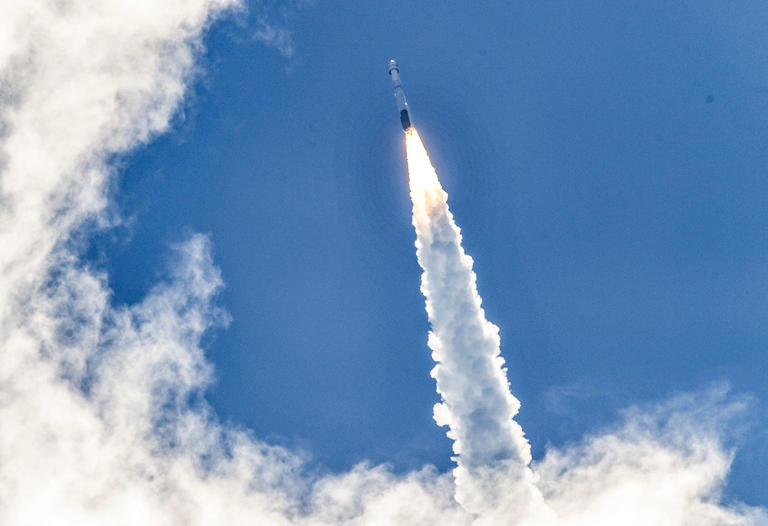Boeing Starliner, International Space Station, ISS, NASA, commercial space travel, Butch Wilmore, Suni Williams, Atlas V rocket, SpaceX, commercial crew program, space exploration, space missions, Starliner docking, low-Earth orbit, space capsule
“Boeing’s Starliner capsule has successfully docked with the International Space Station, marking a significant milestone in commercial space travel. Learn about the challenges faced, the astronauts’ mission, and the future of space exploration.”
On a momentous occasion for Boeing and the broader space community, the Boeing Starliner capsule has successfully reached the International Space Station (ISS) with its two pioneering astronauts, Butch Wilmore and Suni Williams. This milestone marks a significant step forward in commercial space travel and NASA’s ongoing efforts to foster a competitive space industry.

The Journey to the ISS
After a series of delays and technical challenges, the Starliner launched from Cape Canaveral, Florida, atop an Atlas V rocket manufactured by United Launch Alliance. The launch occurred at 10:52 a.m. EDT from the Kennedy Space Center, marking a triumphant return to form for the program.
The journey was not without its hitches. Initially scheduled for launch on May 6, the mission faced a major setback due to a malfunctioning valve in the rocket’s upper stage, which necessitated a complete scrub of the mission. Subsequent efforts to replace the valve and repressurize the system encountered another obstacle: a small helium leak in Starliner’s service module. This issue caused further delays until the spacecraft finally lifted off.
Upon reaching orbit, Starliner successfully detached from the Atlas V rocket and commenced its journey toward the ISS using its own propulsion system. Despite the initial success, NASA reported discovering three helium leaks late Wednesday night. The team was already aware of one leak before the launch, but two additional leaks emerged once the Starliner was in orbit. Fortunately, engineers managed to close two of the affected helium valves, ensuring the spacecraft’s stability.
Arrival and Activities on the ISS
The Starliner made an autonomous docking at the ISS’s Harmony module around 1:34 p.m. EDT on Thursday. This successful docking was a crucial test of the spacecraft’s systems and capabilities. Wilmore and Williams, both seasoned NASA veterans and former Navy pilots, are set to spend approximately a week aboard the ISS.
During their stay, the astronauts will conduct a series of tests on the Starliner spacecraft and its subsystems. These tests are essential for validating the vehicle’s performance in a real-world environment and ensuring its readiness for future missions. The astronauts’ activities will also include a mix of scientific research, maintenance tasks, and routine operations aboard the ISS.
At the end of their mission, Wilmore and Williams will reboard the Starliner for their return trip to Earth. The spacecraft is designed to land in the American Southwest, using parachutes to slow its descent and large airbags to cushion the landing. This carefully orchestrated landing procedure is crucial for ensuring the safety of the crew and the integrity of the spacecraft.
Boeing’s Starliner in the Competitive Space Industry
The success of the Starliner mission is a significant achievement for Boeing, which has faced intense competition from SpaceX in the realm of commercial space travel. The Starliner is designed to carry up to seven passengers for missions to low-Earth orbit. For NASA missions, it will typically carry four astronauts, along with cargo and scientific instruments, to and from the ISS.
Boeing’s efforts are part of NASA’s Commercial Crew Program, which aims to stimulate the development of safe, reliable, and cost-effective space transportation. In 2014, Boeing was awarded $4.8 billion, while SpaceX received $3.1 billion to develop their respective spacecraft. SpaceX’s Dragon spacecraft, which flew its first crewed mission in 2020, has since completed multiple missions to the ISS. The recent return of SpaceX’s Crew-7 after nearly 200 days aboard the ISS underscores the company’s growing prowess in space travel.
SpaceX continues to push the envelope with its ambitious Starship program. Just a day after Starliner’s launch, SpaceX conducted the fourth unmanned test flight of Starship, a 400-foot-long rocket. This test marked the most successful run for Starship to date, with the rocket reaching orbit, coasting in space, and completing its first-ever landing burn before splashing down in the Indian Ocean.
The Future of Commercial Space Travel
The success of Boeing’s Starliner and SpaceX’s ongoing achievements highlight the burgeoning potential of commercial space travel. These advancements are not only crucial for maintaining a continuous human presence in low-Earth orbit but also for paving the way for future deep space exploration.
NASA’s strategy of fostering competition between private companies like Boeing and SpaceX is yielding significant benefits. By leveraging the strengths and innovations of multiple players, NASA aims to ensure that the United States remains at the forefront of space exploration.
In the coming years, we can expect to see more frequent and diverse missions to the ISS and beyond. The collaboration between NASA and commercial partners will continue to drive technological advancements, reduce costs, and expand access to space for a broader range of participants.
For Boeing, the successful docking of the Starliner at the ISS is a testament to the company’s resilience and engineering prowess. It marks the beginning of a new era in which multiple commercial providers can offer reliable transportation to and from space, enhancing the overall capabilities of the human spaceflight program.
As Wilmore and Williams conduct their tests and prepare for their return journey, the space community watches with great anticipation. The lessons learned from this mission will undoubtedly inform future endeavors, contributing to the ongoing quest to explore and understand the cosmos.
Read More-